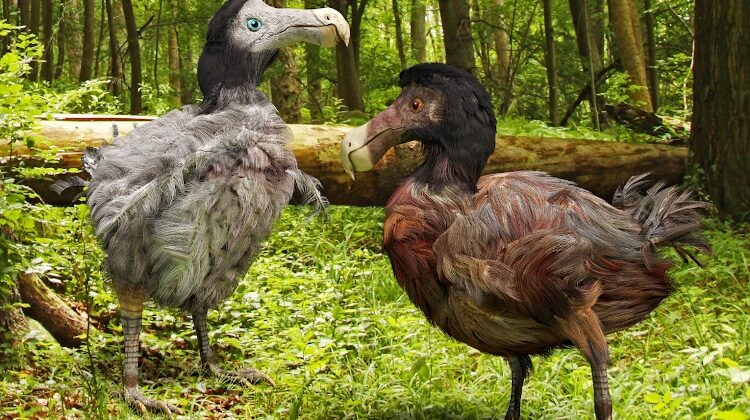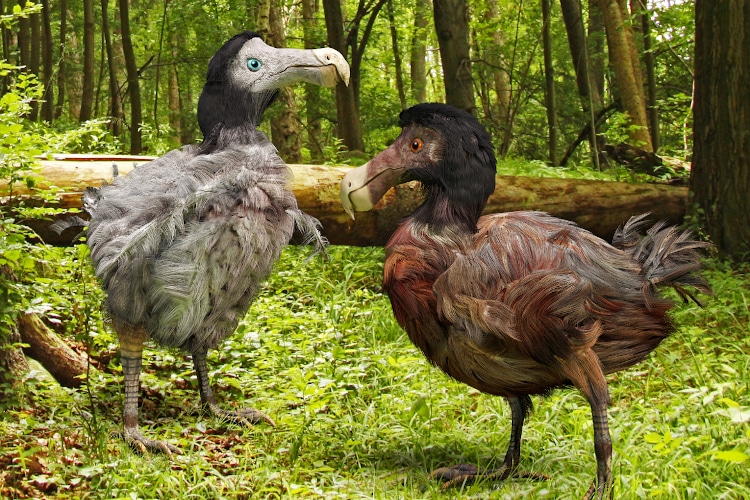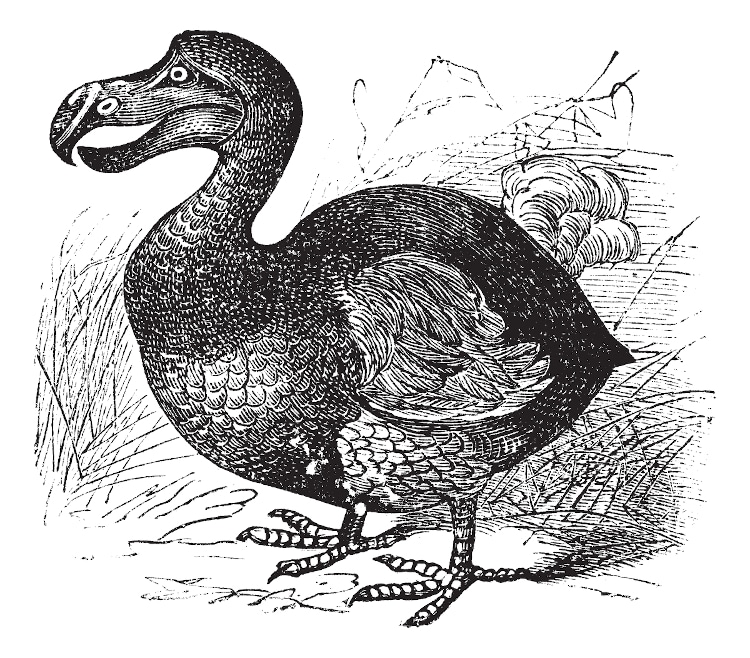
The dodo bird, which was flightless and went extinct in the 1600s, is a well-known example of how human actions can lead to the extinction of species. Now, a genetic engineering company called Colossal Bioscience is working towards bringing back a version of the dodo bird.
The famous flightless bird known as the dodo was native to Mauritius and was known for its distinctive curved beak, blue-gray color, and weight of up to 50 pounds. Scientists believe that due to the absence of natural predators in their habitat, the dodo evolved into a flightless bird over time. The animals flourished until the arrival of Europeans in the 16th century, who introduced species such as rats, goats, pigs, and deer that impacted the ecosystem and hunted the dodos. By 1690, the species was extinct. Despite being depicted in popular culture as clunky creatures, researchers believe that the dodo was more agile than previously thought, based on their anatomy.

Beth Shapiro, the head paleogeneticist at Colossal Bioscience, comments on the fate of the Dodo bird. According to her, humans are to blame for the extinction of this species and she is thrilled to work with Colossal and the people of Mauritius to bring back the Dodo through de-extinction efforts. She also highlights her excitement in contributing to the advancement of genetic rescue tools for birds and conserving avian species.
The plan to bring back the dodo involves using gene editing techniques and tapping into the genome for specific traits. The team at Colossal Bioscience will then work with the closest living relative of the dodo, the Nicobar pigeon, to reassemble these traits. The final step in the process would be to transfer primordial germ cells into a chicken surrogate host.
However, it should be noted that the revival of the dodo would not be an exact replica of the original species, and would lack the behavioral traits that are passed down from generation to generation in the wild. The animal created through the gene editing process would be more like a proxy for the dodo, rather than a true replica, as it would only have physical characteristics similar to the extinct bird. Colossal Bioscience aims to release the proxy back into the wild in Mauritius, but it remains to be seen how it will adapt and thrive in its new environment without the guidance of its parents and community.
In addition to its efforts to revive the dodo, Colossal Bioscience has also been working on the de-extinction of the mammoth and the thylacine. To support these endeavors, the company has received a second round of funding worth $150 million from venture capital firms such as the United States Innovative Technology Fund and In-Q-Tel, a company funded by the CIA. If successful, the dodo would become the first bird species to be brought back from extinction. However, it is important to note that the resulting creature will not be an exact replica of the original dodo, but rather a proxy that shares some of its characteristics. This is because the genetic engineering process can only recreate certain traits and will not be able to replicate the animal’s behaviors and learned skills, which are developed through interaction with its community and parents.
While the de-extinction project of the dodo by Colossal Bioscience has garnered significant funding, there are some scientists who question the priority of this project. They argue that the resources used for this project could be better utilized in preserving the animals that exist today and that the primary focus should be on saving endangered species from extinction. Professor Ewan Birney, deputy director of the European Molecular Biology Laboratory, expressed his concern by saying, “I’ve no idea whether the mechanics of this will work as they claim, but the question is not just can you do this but should you do it.” He adds, “There are people who think that because you can do something you should, but I’m not sure what purpose it serves, and whether this is really the best allocation of resources. We should be saving the species that we have before they go extinct.”
The company plans to recreate the bird’s distinctive features by mining the dodo’s genome and reassembling it with the help of the Nicobar pigeon, the closest living relative of the dodo. The team aims to create primordial germ cells that will then be transferred into a surrogate chicken host. Although the resulting bird will not be a true replacement for a dodo, the company hopes that it will take its place in its original ecosystem and help bring balance back to it. The company has received $150 million in funding from venture capital firms and is also working on bringing back the mammoth and the thylacine. The dodo would be the first bird to be de-extincted. However, some scientists are questioning the morality and allocation of resources for such a project, as resources could be better used for conserving current endangered species.

Learn more about this project in the video below:
Colossal Biosciences: Website | Instagram
h/t: [IFL Science]

Leave a Reply